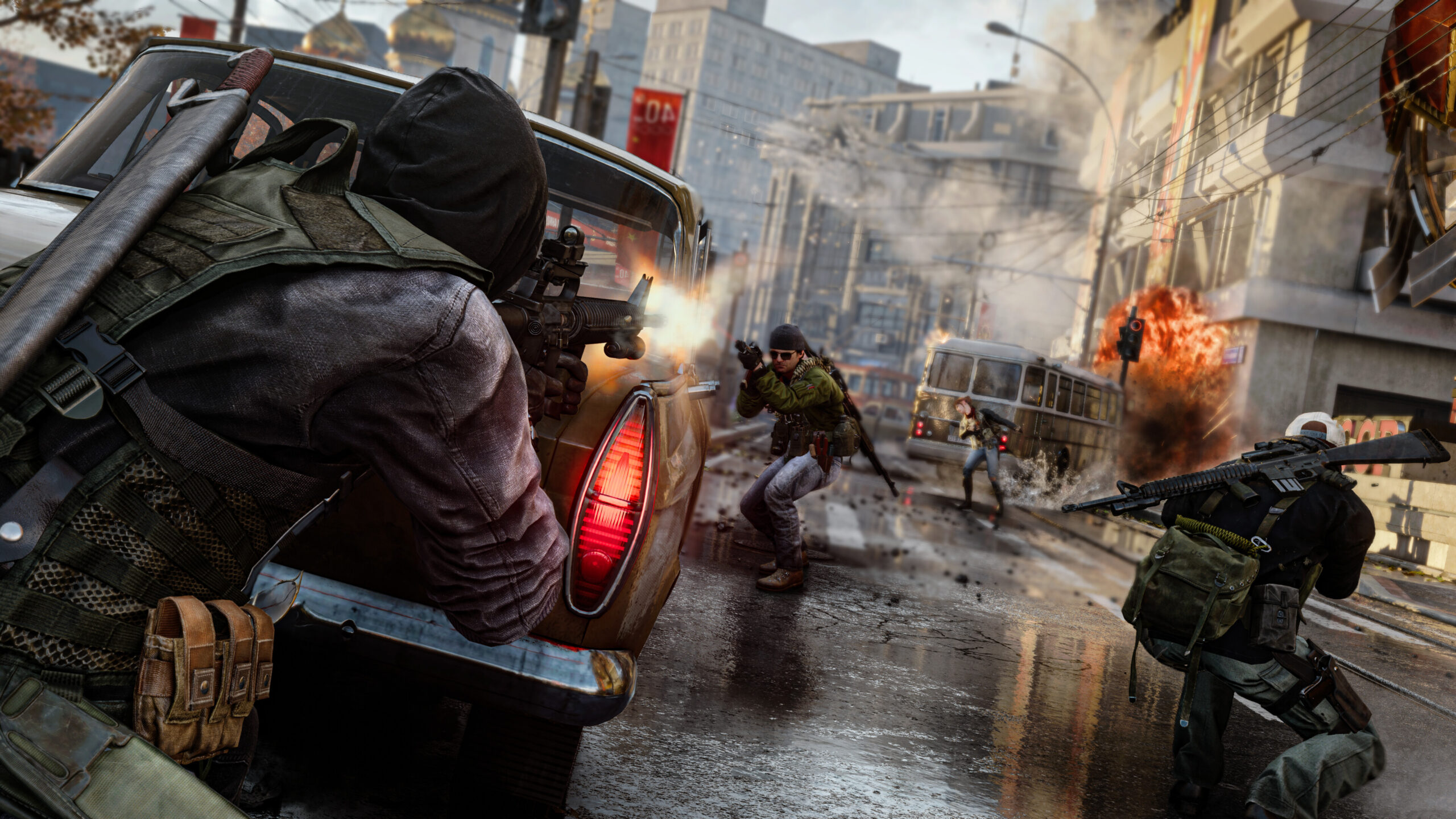Call of Duty, one of the most popular video game franchises, has long been known for its high production values. Recent leaks have shed light on the staggering development costs behind some of the series’ most notable titles. The development budgets for Call of Duty games have reached unprecedented levels, with Black Ops Cold War reportedly costing $700 million to produce.
These figures provide insight into the scale of investment required to create modern blockbuster video games. Black Ops III, released in 2015, had a budget of $450 million and has sold 43 million copies to date. The 2019 Modern Warfare remake reportedly cost $640 million to develop. These enormous budgets reflect the increasing complexity and expectations of AAA game development.
The leaked information raises questions about the financial sustainability of such large-scale projects. Despite the high costs, Call of Duty games continue to be major commercial successes. The franchise’s ability to generate significant returns on these massive investments demonstrates its enduring popularity among gamers worldwide.

Understanding the Costs Behind Call of Duty
The Price of Development
Recent court documents have shed light on the massive budgets required to develop Call of Duty games. These figures, revealed during legal proceedings, offer a rare look into the financial side of AAA game production. The numbers are substantial, showing just how much investment goes into creating these blockbuster titles.
Budget Breakdown

The documents show spending on several Call of Duty games. Here’s a summary of some of the reported budgets:
| Game Title | Estimated Development Budget (USD) |
|---|---|
| Black Ops III (2015) | Over $450 million |
| Modern Warfare (2019) | Over $640 million |
| Black Ops Cold War (2020) | Over $700 million |
It’s important to remember these figures likely cover development and post-launch support. They probably don’t include marketing costs, which can also be very high for big games. So, the true total cost of bringing a Call of Duty game to market is even higher.

Factors Influencing Cost
Several factors drive these high costs. Game development is complex, requiring large teams of programmers, artists, designers, and other professionals. Creating realistic graphics, engaging gameplay, and expansive game worlds takes a lot of time and resources. Voice acting, music, and sound effects also add to the expense.
The push for yearly releases also puts pressure on developers. They must work hard to deliver a new game every year, which requires significant financial backing. This yearly cycle is a key part of the Call of Duty business model, but it comes at a cost.
Comparing to Other Games
While these Call of Duty budgets are high, big-budget game development is generally expensive. Other major games can also cost hundreds of millions of dollars to produce. This is the nature of the industry, where players expect high-quality experiences. The budgets for games have increased significantly in recent years as technology has improved and player expectations have increased.
The Impact on the Industry
The large budgets of Call of Duty games have a big impact on the gaming industry. These numbers show the scale of investment required to compete at the highest level. This can make it hard for smaller studios to compete. It also puts pressure on publishers to make sure their games are successful to recoup these large costs.

Considering Game Marketing Costs
While the development budgets are large, the marketing costs for these games are also significant. Marketing campaigns often include TV commercials, online ads, social media promotions, and partnerships with influencers. These efforts aim to reach a wide audience and generate excitement for the game’s release. When you consider the marketing budgets in addition to the development budgets, the total cost of bringing a Call of Duty game to market becomes even more substantial.
For example, a SuperData report estimated that Call of Duty: Modern Warfare (2019) had a marketing budget of around $200 million. Combining this with the reported development budget of over $640 million, the total cost for that game could have been over $840 million. This shows the true scale of investment involved in creating and launching a major Call of Duty title. This also explains why these companies have such high valuations.
Key Takeaways
- Call of Duty development budgets have reached up to $700 million for a single game
- High production costs reflect the increasing complexity of modern video game development
- The franchise’s commercial success justifies these substantial investments
Analysis of Leaked Development Budgets
The leaked Call of Duty development budgets reveal massive investments in game creation and marketing. These figures provide insights into the financial strategies of major game publishers and their impact on the industry.
Comparative Financial Overview
Call of Duty budgets have increased significantly over time. Black Ops III (2015) had a $450 million budget. Modern Warfare (2019) increased to $640 million. Black Ops Cold War (2020) reached $700 million.
These budgets dwarf other high-profile games. Sony’s The Last of Us: Part 2 cost around $220 million – less than half of the Call of Duty titles.
The rising costs reflect growing consumer expectations and market competition. Publishers invest heavily to maintain franchise popularity and profitability.
Implications for the Gaming Industry
The leaked budgets highlight the financial risks in AAA game development. Few publishers can afford such massive investments.
This trend may lead to:
- Increased focus on established franchises
- Fewer new IP creations
- Higher game prices or more microtransactions
- Longer development cycles
Small and mid-size studios may struggle to compete. The industry could see more consolidation as larger companies acquire talent and resources.
Development and Marketing Allocation
The leaked figures likely include both development and marketing costs. Call of Duty games typically have multi-year development cycles and global marketing campaigns.
Development costs may cover:
- Large teams of developers, artists, and designers
- Cutting-edge technology and tools
- Voice acting and motion capture
- Music composition and sound design
Marketing budgets often rival development costs. They fund:
- TV commercials and online ads
- Influencer partnerships
- Esports events and tournaments
- Pre-release beta testing
Post-launch support is crucial. Live service elements like battle passes and store bundles generate ongoing revenue to offset initial costs.
Impact on Partnerships and Competitiveness
The massive budgets for Call of Duty games have reshaped industry partnerships and competitive dynamics. These investments have influenced relationships with console makers, altered the FPS landscape, and sparked legal and consumer reactions.
Activision’s Relationship with Console Giants
Activision’s high-budget Call of Duty titles have become crucial for console sales. Sony and Microsoft compete fiercely for exclusive content and early access deals. The $450 million spent on Black Ops 3 led to a timed exclusivity agreement with PlayStation.
Microsoft’s proposed acquisition of Activision has raised concerns about future platform availability. The $640 million budget for Modern Warfare (2019) demonstrates the franchise’s importance to both companies.
Xbox’s Game Pass service could potentially include Call of Duty, altering the competitive balance between platforms.
Competitive Landscape Analysis
Call of Duty’s enormous budgets have set a new bar for AAA game development. Competitors struggle to match the production values and marketing reach.
Other major franchises like Battlefield have increased their budgets but still lag behind. The $700 million spent on Black Ops Cold War dwarfs the reported $220 million budget for Sony’s The Last of Us Part 2.
This spending gap creates challenges for mid-tier FPS games trying to compete for player attention and market share.
Legal and Consumer Response
The leaked budget figures have sparked discussions about game pricing and microtransactions. Some consumers question why games with such high budgets still include additional monetization.
Legal scrutiny has increased, with the budget information emerging from a California lawsuit. This transparency may impact future negotiations between Activision and its partners.
Players now expect higher quality and more content from Call of Duty games, knowing the level of investment. This raises the bar for each new release in the franchise.
Frequently Asked Questions
Call of Duty development budgets have sparked curiosity among fans and industry observers. These questions address key aspects of the series’ financial landscape.
What was the development budget for Call of Duty: Modern Warfare?
Call of Duty: Modern Warfare (2019) had a development budget of $640 million. This figure covers the entire lifecycle of the game, including post-launch content and updates.
The substantial investment resulted in 41 million copies sold. This sales performance demonstrates the game’s commercial success despite its high production costs.
What are the sales figures for Call of Duty: Black Ops III post-launch?
Specific post-launch sales figures for Call of Duty: Black Ops III are not provided in the available information. The game had a development budget of over $450 million.
Black Ops III’s budget represents a significant investment in the franchise. This suggests Activision’s confidence in the game’s potential for long-term sales and player engagement.
How does the budget of Call of Duty: Black Ops Cold War compare to previous titles in the series?
Call of Duty: Black Ops Cold War had a development budget of $700 million. This makes it the most expensive entry in the series to date.
The budget for Black Ops Cold War exceeds that of Modern Warfare (2019) by $60 million. It surpasses Black Ops III’s budget by at least $250 million.
What factors contribute to the high development costs of Call of Duty games?
Several factors drive up the development costs of Call of Duty games. These include:
- Large development teams working over multi-year cycles
- Cutting-edge graphics and technology
- Extensive motion capture and voice acting
- Marketing and promotional campaigns
- Post-launch content creation and support
The series’ commitment to pushing technical boundaries and delivering expansive multiplayer experiences also contributes to the high budgets.
Has the increasing budget of Call of Duty titles influenced their pricing for consumers?
The standard retail price for new Call of Duty games has remained relatively stable at $60 for many years. This is despite the significant increases in development budgets.
Special editions and season passes often come at higher price points. These additional offerings help offset the rising development costs without increasing the base game price.
What is the financial performance of Call of Duty games with substantial development budgets?
Call of Duty games with high development budgets have shown strong financial performance. Black Ops Cold War, with its $700 million budget, grossed an estimated $1.8 billion from game sales alone.
This figure is based on 30 million copies sold at a $60 retail price. It does not include additional revenue from in-game purchases or special editions.
The series continues to be highly profitable for Activision. The substantial development investments have translated into commercial success and sustained player engagement.







